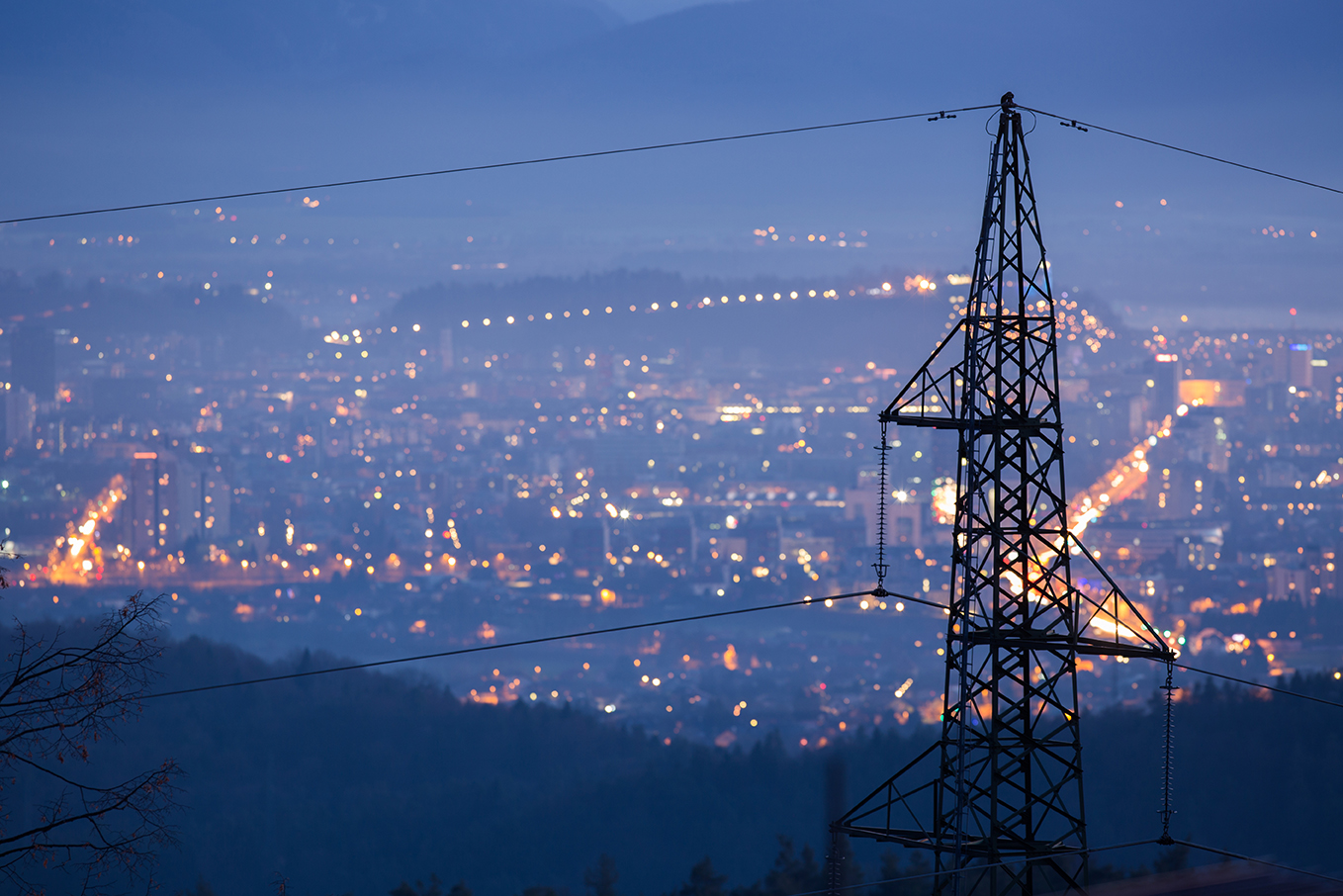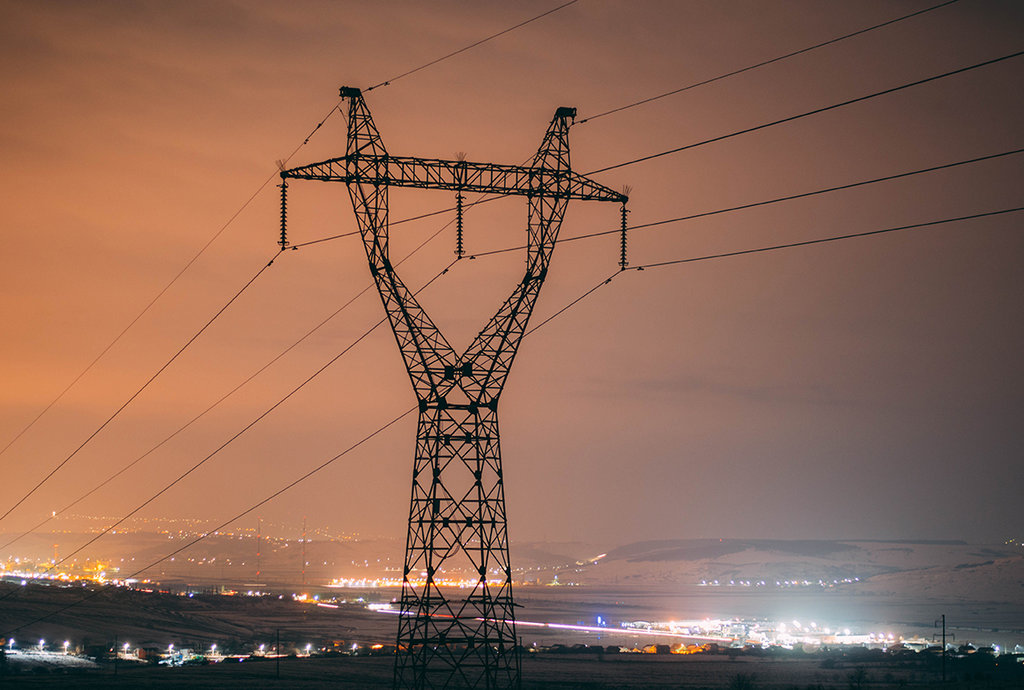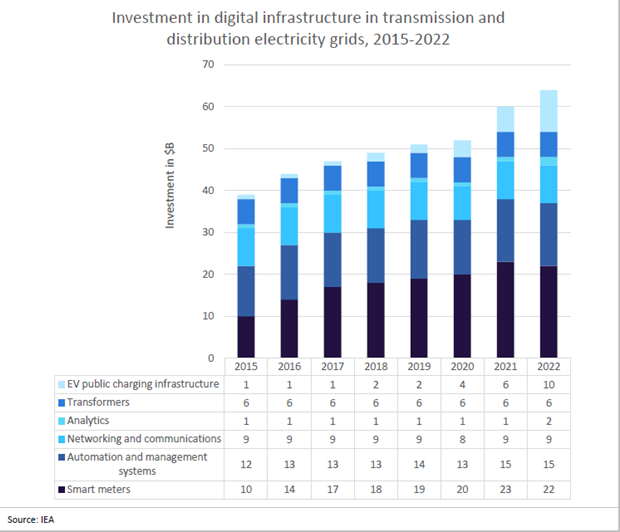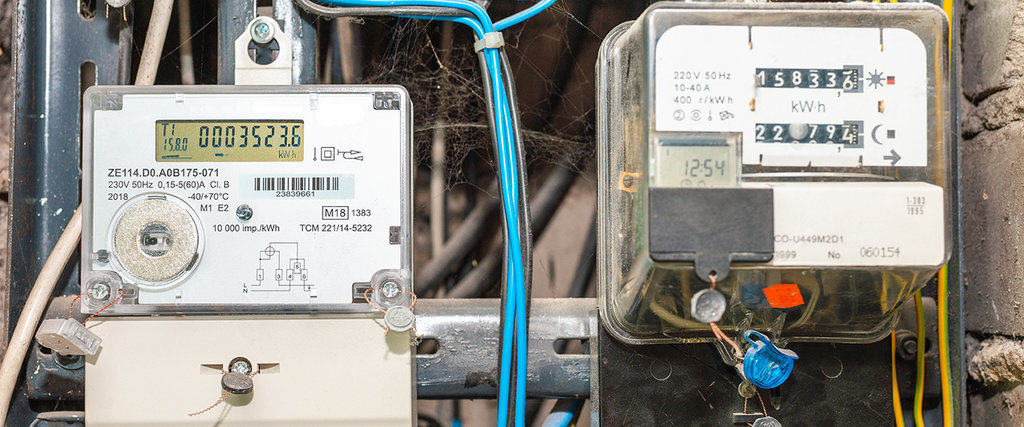Feature
Smart grids: Watts the fuss all about?
What really is a smart grid, what does it involve, and how are smart grid technologies changing the world? Kit Million Ross explains.

Data flows from energy consumption will power smart grids. Credit: Urbans via Shutterstock
Grid transmission and distribution is a topic that is becoming increasingly important as the clean energy transition heats up. As we hear more frequent reports of grid operators having to throw away immense amounts ofenergy to maintain grid stability at peak generation times, it becomes ever-clearer that most grids are in dire need of modernisation. Smart grids promise a solution to a myriad of grid issues, but how can smart grids solve the many problems of the transition?
What makes a smart grid smart?
The International Energy Agency (IEA) defines a smart grid as “an electricity network that uses digital and other advanced technologies to monitor and manage the transport of electricity from all generation sources to meet the varying electricity demands of end users”. Put simply, smart grid technology allows electricity usage patterns to be communicated from homes and businesses, so distribution can be controlled in real time. There are a lot of different pieces of software and hardware that make this possible, both on the consumer end and as part of larger operations run by utility companies and power distributors.
The main difference between smart grids and traditional grid systems, aside from the use of digital infrastructure, is that smart grids are most often far more decentralised. This allows for an adaptable, flexible grid system that can respond far better to outages and damage than traditional grids can.
With the parallel rise in electric vehicle (EV) usage, this flexible approach to the grid has also caused an interesting new phenomenon known as vehicle to grid (V2G). Here, EV users charge their vehicle when energy is cheap, often at night, and then sell this energy back to the grid at times of peak need. A trial of this system in the UK revealed that EV users could save up to £840 per year if they operate their vehicles this way.
Often, smart grids rely on technology such as:
- Submeters - energy monitoring and measurement devices installed within residential, commercial, and industrial facilities to closely track power consumption.
- Home Area Network (HAN) - a communication network within a household that helps to connect various digital and electronic devices other than smart appliances.
- Energy Management Systems - a collection of various tools used by utility firms to monitor usage, manage outages, and control distribution.
- Smart appliances - various home appliances with settings that help feed usage data back into smart grids.

Smart grids allow for more responsive generation. Credit: Alex Oancea via Shutterstock
How much interest is there in smart grids, and who are the major players?
According to data from the IEA, investment in smart grid tech has seen steady growth year on year, with global investment hitting the $64bn mark in 2022. The percentage of grid investment focused on digital tech has skyrocketed; a report on smart grids from Future Power Technology’s parent company GlobalData, notes that “according to the IEA, the digital share in investment spending on electricity grids accounted to an increase of 20% in 2022 from 11% in 2015.” This report also notes that CenterPoint Energy Inc, Duke Energy, EDF, Eon, Enel, Engie, Iberdrola, Southern Company, and Vattenfall are current leaders in the space.

Why are smart grids helpful?
The shift to renewables has created significant problems for electricity grids across the world, many of which simply are not equipped to handle the surges and lulls of generation that renewables cause. In March this year it was revealed that in 2022, the British transmission company National Grid spent £215m ($257m) paying for wind turbines to be switched off on especially windy days. At times of peak generation, “power bottlenecks” required turbines to be turned off to prevent damage due to insufficient cable infrastructure.
Unlike traditional grids, smart grids can handle the intermittent nature of renewables. When the right tech is in place, with enough energy storage systems, smart grids can automatically store excess energy when the supply is abundant and release it when demand peaks. Smart grid integration could lead to large efficiency savings, be a major step towards reducing our reliance on fossil fuels, and mitigate the climate impact of the energy system.

Smart meter rollouts have enabled smart grids. Credit: ARVD73 via Shutterstock
On a much smaller scale, home-based smart grid technology like smart meters can help consumers cope with soaring energy costs. Smart meters can show real-time pricing information at a glance, helping end users identify energy-hungry appliances and make informed choices to lower their energy bills. In the UK, government estimates indicate that smart meter users reduced their usage by 3.0% for electricity and 2.2% for gas, although further research is needed.
The reliability of smart grids, when the correct demand response systems are put in place, is also a major advantage. As climate change wreaks havoc with weather patterns, having a robust and adaptable system to ensure consistent power supply is key to the safety and comfort of us all. Residents of Texas, US, learned the importance of a stable grid in February 2021 when more than four million people were disconnected from the grid following a storm that dropped temperatures to -15°C. This caused several hundred deaths and around $195bn of damage. In Ohio, FirstEnergy subsidiary Illuminating Company hopes to avoid a similar situation for Ohioans, by installing automated equipment and systems to prevent service disruptions in severe weather.
It is clear that our grids, globally, are in dire need of modernisation, and smart grid technology is the answer to our future energy needs. Embracing this transformative technology is not just a choice; it has become a necessity to cope with changing generation and weather patterns. If we are to pave the way for generations to come, ensuring they inherit a world able to cope with their power needs, grid operators will need to think smarter.